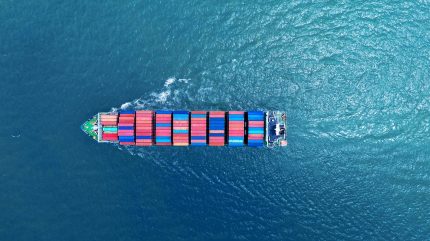US ports brace for import surge as tariff hikes and strike threat looms

US PORTS BRACE FOR IMPORT SURGE AS TARIFF HIKES AND STRIKE THREAT LOOMS
Import
volumes at major US container ports are expected to see a sustained increase
well into the following spring as potential strike threat looms and tariffs
increase under President-elect Donald Trump.
Last month, Trump said he
plans to sign an executive order imposing a 25% tariff on all goods
coming from China, Mexico and Canada.
Negotiations have stalled between the
International Longshoremen’s Association and the US Maritime Alliance, raising
the spectre of a strike upon the expiration of the current contract extension
on 15 January—a stopgap measure following a three-day strike in
October.
In response, last week saw the NRF
spearheading an appeal from various trade groups urging both sides to resume
talks. Concurrently, President-elect Trump has voiced his intention to raise
tariffs across a broad spectrum after assuming office on 20 January.
NRF supply chain and customs policy vice president Jonathan Gold said:
“Either a strike or new tariffs would be a blow to the economy and retailers
are doing what they can to avoid the impact of either for as long as they
can.
“We hope that both can be avoided, but
bringing in cargo early is a prudent step to mitigate the impact on our
industry, consumers and the nation’s economy. We call on both parties at the
ports to return to the table, get a deal done and avoid a strike. And we call
on the incoming administration to use tariffs in a strategic manner rather than
a broad-based approach impacting everyday consumer goods.”
While figures for November have yet to be
disclosed, projections estimate that ports handled approximately 2.17 million
Twenty-Foot Equivalent Units (TEUs) during that month—a robust year-over-year
rise of 14.4%, according to the Global Port Tracker report jointly published by
the National Retail Federation (NRF) and Hackett Associates. |
In response, last week saw the NRF
spearheading an appeal from various trade groups urging both sides to resume
talks. Concurrently, President-elect Trump has voiced his intention to raise
tariffs across a broad spectrum after assuming office on 20 January.
NRF supply chain and customs policy vice president Jonathan Gold said:
“Either a strike or new tariffs would be a blow to the economy and retailers
are doing what they can to avoid the impact of either for as long as they
can.
“We hope that both can be avoided, but
bringing in cargo early is a prudent step to mitigate the impact on our
industry, consumers and the nation’s economy. We call on both parties at the
ports to return to the table, get a deal done and avoid a strike. And we call
on the incoming administration to use tariffs in a strategic manner rather than
a broad-based approach impacting everyday consumer goods.”
While figures for November have yet to be
disclosed, projections estimate that ports handled approximately 2.17 million
Twenty-Foot Equivalent Units (TEUs) during that month—a robust year-over-year
rise of 14.4%, according to the Global Port Tracker report jointly published by
the National Retail Federation (NRF) and Hackett Associates.
By Just Style
